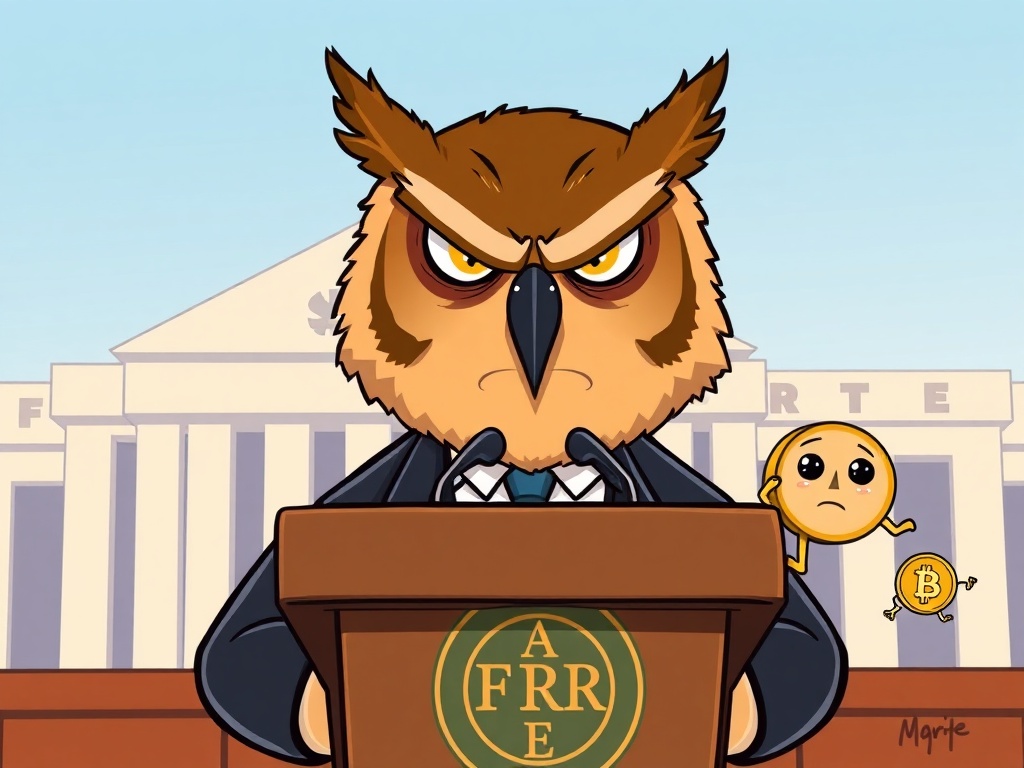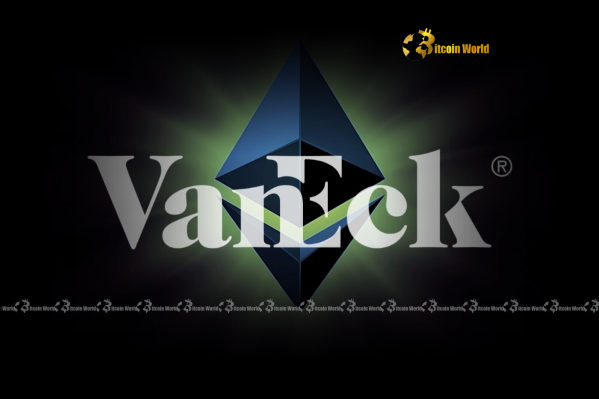BitcoinWorld

Unpacking the Fed Rate Cut: Why the Federal Reserve Holds Steady
In the dynamic world of cryptocurrencies, every whisper from a central bank can send ripples across the market. Recently, the Federal Reserve delivered a clear message: don’t hold your breath for an immediate Fed Rate Cut. This decision, while perhaps expected by some, carries significant weight for investors, businesses, and even your digital asset portfolio. So, what exactly did the Fed say, and what does it mean for the economic landscape and your crypto holdings?
The Federal Reserve’s Steady Hand: No Imminent Fed Rate Cut
According to reports from JinSe Finance, citing Nick Timiraos, the Federal Reserve has opted for minimal changes to its policy statement, deliberately avoiding any signal of an imminent Fed Rate Cut. The benchmark interest rate remains firmly planted in the range of 4.25%–4.50%. This unwavering stance underscores the Fed’s cautious approach as it continues to monitor critical economic indicators.
Why the hesitation? The Federal Reserve, often referred to simply as ‘the Fed,’ operates with a dual mandate: to achieve maximum employment and maintain price stability (i.e., control inflation). Currently, the economy presents a complex picture, making decisive shifts in monetary policy challenging. The Fed’s strategy is akin to a meticulous gardener, carefully observing the growth of various plants before deciding whether to water more or less.
Understanding the Fed’s Dual Mandate
To grasp the significance of the Fed’s decision, it’s crucial to understand its core responsibilities:
- Maximum Employment: The Fed aims for an economy where everyone who wants a job can find one. A strong labor market, characterized by low unemployment and healthy job creation, is a key indicator.
- Price Stability: This means keeping inflation in check, typically targeting an annual inflation rate of around 2%. High inflation erodes purchasing power, while deflation can stifle economic growth.
The current benchmark rate, which influences everything from mortgage rates to business loans, is a powerful tool in balancing these two objectives. A higher rate tends to cool down an overheating economy by making borrowing more expensive, thereby reducing demand and theoretically taming inflation. Conversely, a Fed Rate Cut stimulates economic activity by making money cheaper to borrow.
What Economic Barometers Is the Fed Watching for a Fed Rate Cut?
The Fed’s policy statement highlighted its continued focus on specific economic data points. These are the crucial barometers that will ultimately dictate if and when a Fed Rate Cut becomes a reality:
1. Inflation: The Persistent Challenge
Inflation remains at the forefront of the Fed’s concerns. While it has shown signs of cooling from its peak, it has not yet consistently reached the Fed’s desired 2% target. The Fed closely monitors various inflation metrics, including the Consumer Price Index (CPI) and the Personal Consumption Expenditures (PCE) price index, the latter being its preferred measure. A sustained downward trend in these indicators, signaling that price pressures are truly subsiding, would be a major prerequisite for any discussion about a Fed Rate Cut.
2. Employment: A Resilient Labor Market
The U.S. labor market has shown remarkable resilience, consistently adding jobs and maintaining a low unemployment rate. A strong job market, while positive for individuals and the economy, can also contribute to inflationary pressures if wage growth outpaces productivity. The Fed is carefully assessing whether the current employment levels are sustainable without reigniting inflation. A significant weakening in the labor market could prompt the Fed to consider a rate cut to stimulate job growth.
3. The Impact of Higher Import Tariffs
A notable addition to the Fed’s statement was its explicit mention of monitoring the economic impact of higher import tariffs. Tariffs, essentially taxes on imported goods, can have a dual effect: they can increase the cost of goods for consumers and businesses (contributing to inflation), and they can disrupt supply chains, potentially impacting employment. The Fed’s inclusion of this factor suggests a heightened awareness of geopolitical and trade policy influences on domestic economic stability. Understanding how these tariffs propagate through the economy is crucial for the Fed to make informed decisions about future policy adjustments, including a potential Fed Rate Cut.
How Does a Steady Fed Impact Your Crypto Portfolio?
The cryptocurrency market, known for its volatility, often reacts sensitively to macroeconomic shifts, especially those related to central bank policies. While not directly correlated, a steady or high interest rate environment can influence crypto asset prices in several ways:
- Opportunity Cost: When traditional assets like bonds or high-yield savings accounts offer attractive returns due to higher interest rates, the opportunity cost of holding riskier assets like cryptocurrencies increases. Investors might reallocate capital from crypto to less volatile, yield-bearing traditional investments.
- Borrowing Costs: Higher interest rates translate to higher borrowing costs for businesses and individuals. This can impact crypto companies seeking capital for expansion or individuals looking to leverage their investments.
- Risk Appetite: A tighter monetary policy generally signals a more cautious economic outlook, which can dampen overall investor risk appetite. In such an environment, speculative assets like many cryptocurrencies may face selling pressure.
- Dollar Strength: Higher U.S. interest rates can strengthen the dollar, making dollar-denominated assets, including many cryptocurrencies, relatively more expensive for international buyers.
Conversely, the prospect of a future Fed Rate Cut is often seen as a bullish signal for crypto, as it typically leads to a weaker dollar, lower borrowing costs, and increased liquidity, making risk assets more appealing.
Navigating the Future: When Could We See a Fed Rate Cut?
While the Fed has signaled no imminent cut, the possibility remains on the horizon. The timing, however, is entirely data-dependent. Here are the key factors that could pave the way for a future Fed Rate Cut:
- Sustained Disinflation: Consistent data showing inflation trending convincingly towards the 2% target.
- Weakening Labor Market: A notable increase in unemployment or significant slowdown in job creation that suggests economic contraction.
- External Shocks: Unexpected geopolitical events, financial crises, or other unforeseen circumstances that necessitate monetary easing.
For investors, patience and vigilance are paramount. The Fed’s messaging will continue to be closely scrutinized for any shifts in tone or outlook. Keeping an eye on inflation reports, employment figures, and the broader economic narrative will be crucial.
Actionable Insights for the Savvy Investor
In light of the Fed’s current stance, what can you do?
- Stay Informed: Regularly follow economic news, particularly reports on inflation (CPI, PCE), employment (unemployment rate, non-farm payrolls), and the Federal Reserve’s official statements.
- Diversify Your Portfolio: Don’t put all your eggs in one basket. While crypto offers exciting opportunities, a balanced portfolio that includes other asset classes can help mitigate risk during periods of economic uncertainty.
- Understand Risk: Be aware of the inherent risks associated with cryptocurrency investments, especially when macroeconomic headwinds are present. Invest only what you can afford to lose.
- Long-Term Perspective: For many crypto investors, a long-term hodling strategy can weather short-term market fluctuations driven by macroeconomic news.
The Federal Reserve’s decision to hold steady on interest rates underscores its commitment to navigating a complex economic landscape. While a Fed Rate Cut isn’t on the immediate horizon, the Fed’s continued monitoring of inflation, employment, and external factors like tariffs will dictate its future moves. For the cryptocurrency market, this means continued vigilance and an understanding that broader economic forces play a significant role in market dynamics. By staying informed and adopting a strategic approach, investors can better position themselves to navigate these intriguing times.
Frequently Asked Questions (FAQs)
Q1: What is the Federal Reserve’s primary goal with interest rates?
A1: The Federal Reserve’s primary goal with interest rates is to achieve its dual mandate: maintaining maximum employment and ensuring price stability (controlling inflation, typically targeting 2%). Interest rates are a key tool to influence borrowing costs and overall economic activity.
Q2: How does a higher interest rate impact inflation?
A2: A higher interest rate makes borrowing money more expensive for consumers and businesses. This tends to reduce spending and investment, which in turn cools down demand in the economy. Lower demand can help to slow down the rate at which prices for goods and services increase, thereby reducing inflation.
Q3: Why is the crypto market sensitive to the Fed’s interest rate decisions?
A3: The crypto market is sensitive because higher interest rates can increase the attractiveness of traditional, less risky investments (like bonds or savings accounts), potentially drawing capital away from more speculative assets like cryptocurrencies. It also affects borrowing costs and overall investor risk appetite.
Q4: What are ‘higher import tariffs’ and how do they affect the economy?
A4: Higher import tariffs are taxes imposed by a government on goods imported from other countries. They can affect the economy by increasing the cost of imported goods, which can contribute to domestic inflation. They can also disrupt global supply chains and potentially impact employment in industries reliant on imports or exports.
Q5: What economic conditions might lead the Fed to consider a Fed Rate Cut in the future?
A5: The Fed would likely consider a Fed Rate Cut if there is clear and sustained evidence of inflation consistently moving towards its 2% target, a significant weakening in the labor market (e.g., rising unemployment), or if there are unexpected negative economic shocks that require stimulus.
Did you find this analysis helpful? Share this article with your network to help others understand the complex interplay between central bank policy and the crypto market!
To learn more about the latest crypto market trends, explore our article on key developments shaping Bitcoin price action.
This post Unpacking the Fed Rate Cut: Why the Federal Reserve Holds Steady first appeared on BitcoinWorld and is written by Editorial Team





